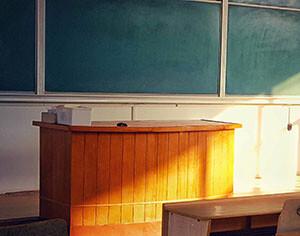Meeting Workforce Demand Won’t Happen With Teacher and Faculty Shortages
States aren’t connecting all the dots between education and workforce development, and it's hurting our economy.
Unless you’ve been living under a rock, you know we’re experiencing record worker shortages in certain careers.
SREB has analyzed data on the economy, labor markets and education, and asked: In what ways is our economy tied to the success of our schools and colleges? How can we improve our economic future through education?
As we connect the research and data dots to help increase economic prosperity across the region, one connection needs more attention — educator shortages, both in pre-K-12 and postsecondary, as well as the limited state and local efforts to meet worker demand.
In looking at trends across southern states, we see that some of today’s top workforce needs include jobs in healthcare, IT and advanced manufacturing. (You can find each state’s in-demand fields in their plans for federal Workforce Innovation and Opportunity Act funds.)
Not enough educators to teach people to do the most in-demand jobs
We also see that industry is rapidly increasing automation, so a more educated workforce will be needed over the next decade. To meet demand, we must produce more people trained to fill these positions.
How? We rely on postsecondary education and training programs to prepare workers with the skills they need and help them earn the credentials, degrees and certificates employers require. The best states in the nation for business have the education infrastructure to produce the skilled workers needed to attract employers. Yet even those states aren’t keeping up.
One reason we aren’t meeting workforce demands: not enough qualified educators. In the fields highest in demand in the labor market, most SREB states lack the necessary faculty to fully staff education and training programs. Some national headlines:
- The US doesn’t have enough faculty to train the next generation of nurses
- The Mismatch Between College Training and Worker Demand
- States want career and technical training but struggle to find teachers
Teacher shortages
In pre-K-12 education, we face record shortages of teachers to prepare young people for the world of work and higher education.
The Bureau of Labor Statistics reports that nationally we will need hundreds of thousands of teachers over the next 10 years in career and technical education, math, science and even English. This comes to a whopping 741,000 instructors by 2030, in addition to the ones needed to fill classrooms now, as we face the highest vacancy rates for teachers we’ve ever seen.
We don’t have enough qualified teachers in our elementary, middle schools and high schools to teach the fundamentals of math, science, reading and critical thinking, much less the specifics of career and technical skills in in-demand fields.
Postsecondary faculty shortages
The situation is just as serious across our colleges, universities and other technical training programs for in-demand fields. Look at some of the faculty shortages by 2031:
|
Postsecondary Faculty Field |
Annual Supply Gap |
Current Employment 2021 Q2 |
Projected Employment 2031 |
|
Health Specialties |
(2,838) |
186,881 |
221,657 |
|
Nursing |
(779) |
57,052 |
66,455 |
|
Business |
(768) |
74,564 |
82,172 |
|
Career/Technical Education |
(540) |
100,017 |
102,569 |
|
Biological Science |
(423) |
48,237 |
51,827 |
|
K-12 Education |
(343) |
54,179 |
55,693 |
|
Engineering |
(323) |
37,435 |
40,160 |
|
Psychology |
(276) |
33,962 |
36,106 |
|
English Language and Literature |
(263) |
59,774 |
59,860 |
|
Mathematical Science |
(184) |
45,247 |
45,133 |
|
Computer Science |
(153) |
29,722 |
30,230 |
Source: JobsEQ. Data as of the second quarter of 2021. Exported January 2022.
On top of pre-K-12 teacher shortages, we don’t have enough faculty at our technical colleges, community colleges and universities to impart the skills and award the credentials people need to qualify for the jobs employers are desperate to fill.
We need to address both the “output” challenge — how many credentialed individuals our education system produces — and the “input” problem: how many staff members in our institutions can teach the courses those people need to earn their credentials.
SREB is helping states use existing resources to address the problem
States receive federal funds to strengthen K-12 education (Every Student Succeeds Act, or ESSA funds), career and technical education in secondary and postsecondary settings (Perkins V funds), and workforce development (Workforce Innovation and Opportunity Act, or WIOA).
Part of the work funded by these statutes can address the need for well-qualified educators. SREB is working with states to align their efforts and their data systems so state and local leaders can readily identify needs and track progress. That way states can address, together, how to prepare, hire and retain the best faculty for our children and adult learners. When more individuals succeed, states can more quickly recover from the recent economic downturn and thrive in the long run.
SREB is also working with many stakeholders across the region to help end teacher shortages, increase the diversity of college faculty and connect education-workforce data and policies in a productive way. See the following SREB resources:


